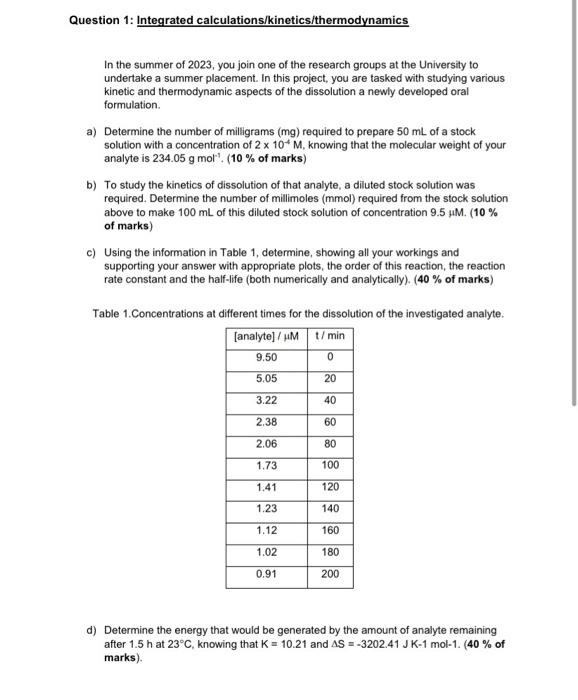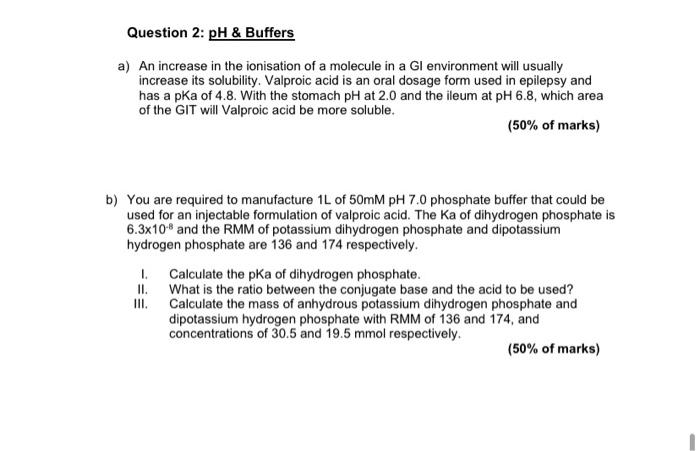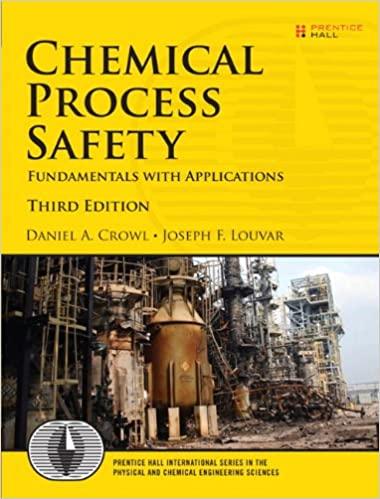Question 1: Integrated calculations/kinetics/thermodynamics In the summer of 2023, you join one of the research groups at the University to undertake a summer placement. In this project, you are tasked with studying various kinetic and thermodynamic aspects of the dissolution a newly developed oral formulation a) Determine the number of milligrams (mg) required to prepare 50 mL of a stock solution with a concentration of 2 x 104 M, knowing that the molecular weight of your analyte is 234.05 g mol-. (10 % of marks) b) To study the kinetics of dissolution of that analyte, a diluted stock solution was required. Determine the number of millimoles (mmol) required from the stock solution above to make 100 mL of this diluted stock solution of concentration 9.5 M. (10% of marks) c) Using the information in Table 1, determine, showing all your workings and supporting your answer with appropriate plots, the order of this reaction, the reaction rate constant and the half-life (both numerically and analytically). (40 % of marks) Table 1. Concentrations at different times for the dissolution of the investigated analyte. (analyte] / M t/min 9.50 0 5.05 20 3.22 40 2.38 60 2.06 80 1.73 100 1.41 120 1.23 140 1.12 160 1.02 180 0.91 200 d) Determine the energy that would be generated by the amount of analyte remaining after 1.5 h at 23C, knowing that K = 10.21 and AS =-3202.41 J K-1 mol-1. (40 % of marks) Question 2: pH & Buffers a) An increase in the ionisation of a molecule in a Gl environment will usually increase its solubility. Valproic acid is an oral dosage form used in epilepsy and has a pKa of 4.8. With the stomach pH at 2.0 and the ileum at pH 6.8, which area of the GIT will Valproic acid be more soluble. (50% of marks) b) You are required to manufacture 1L of 50mm pH 7.0 phosphate buffer that could be used for an injectable formulation of valproic acid. The Ka of dihydrogen phosphate is 6.3x10 and the RMM of potassium dihydrogen phosphate and dipotassium hydrogen phosphate are 136 and 174 respectively. 1. Calculate the pka of dihydrogen phosphate. II. What is the ratio between the conjugate base and the acid to be used? III. Calculate the mass of anhydrous potassium dihydrogen phosphate and dipotassium hydrogen phosphate with RMM of 136 and 174, and concentrations of 30.5 and 19.5 mmol respectively. (50% of marks)








